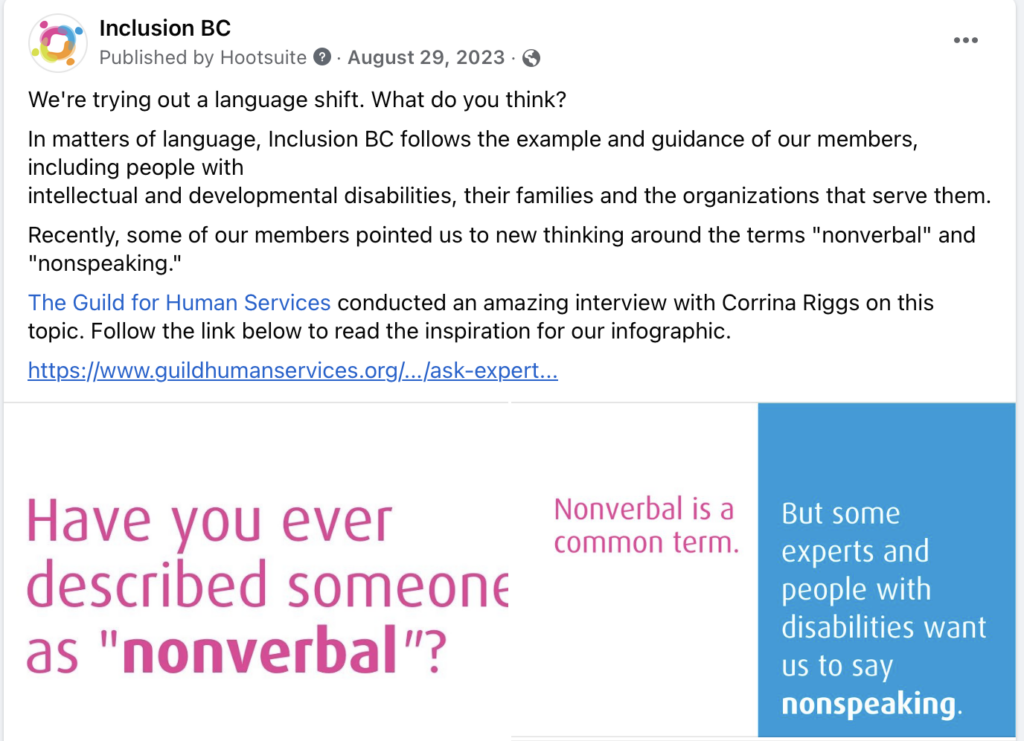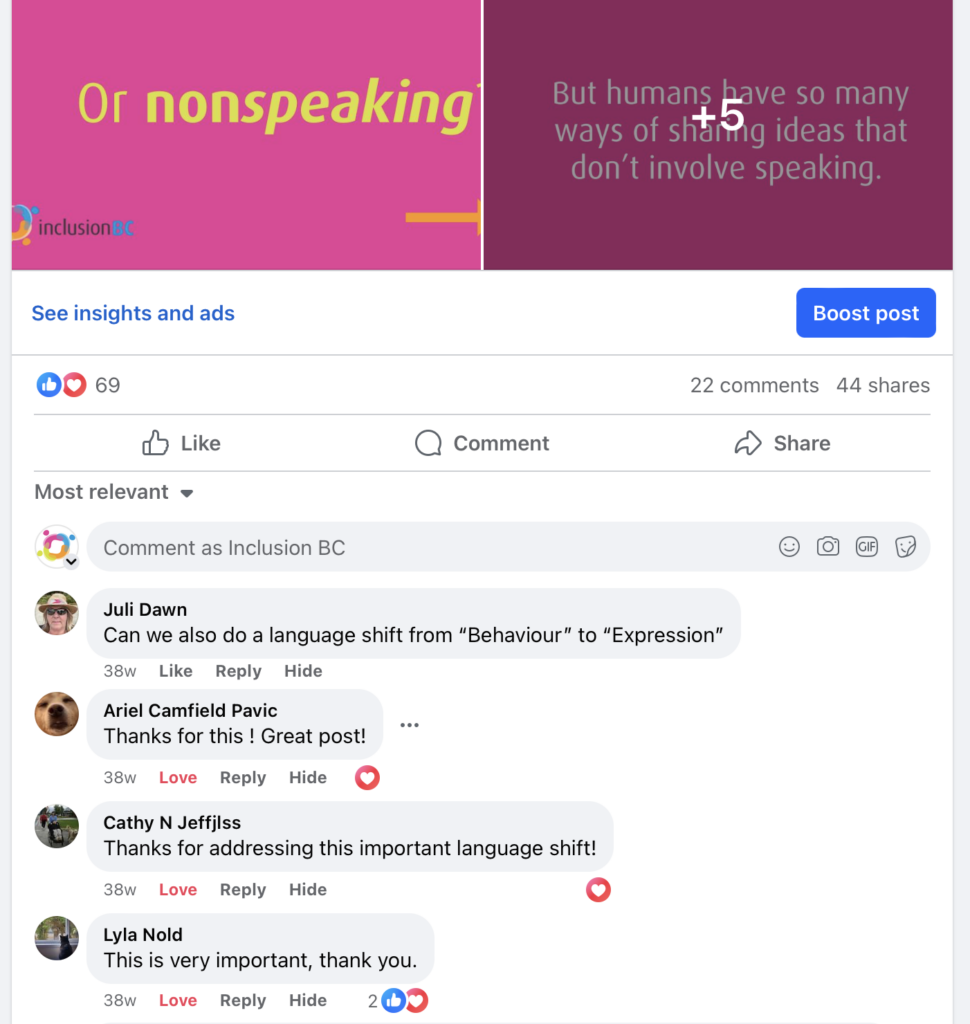When I started working for a disabilities nonprofit, one of my first projects was a social media post about language: Should you say nonverbal or nonspeaking when describing a person who doesn’t speak aloud?
They provided me an article written by an expert on the subject and asked me for a post that would educate their followers, and demonstrate that the organization listened to the preferences of people with disabilities.
After reading the article, I decided it would work really well as a carousel post with graphic text. I pulled out the main points, edited to make them a little punchier for social media, and paired the words with bold colours from the brand palette.
To date, it is still the organization’s most shared and engaged post both on LinkedIn and Facebook. (Not counting paid ads or boosted posts – this one earned it’s reach organically.)
What do you think?
Caption
I wrote this caption to introduce the video. Note that I tagged the organization that published the inspiring article and named the expert quoted in the piece.

Results for Nonverbal or Nonspeaking
As you can see, the “Nonverbal or Nonspeaking” video earned 69 likes, 22 comments and 44 shares on Facebook. It was so heartening to read the comments thanking us for the post, and continuing the conversation with personal experiences.

On LinkedIn, it got 149 reactions, 38 shares and 15 comments. This was exciting because the LinkedIn audience of nonprofit and government staff can be difficult to impress.
Simple & Smart is best for Socials
This flashy carousel was a departure for the organization, which tended to favour a more academic style. They work hard to advocate for the rights of people with disabilities in legislation, so they want to represent themselves as a well-researched, reliable source of information.
By simplifying the language and using the brand’s bright colours, we made a bold impression on a much wider audience without compromising credibility.
